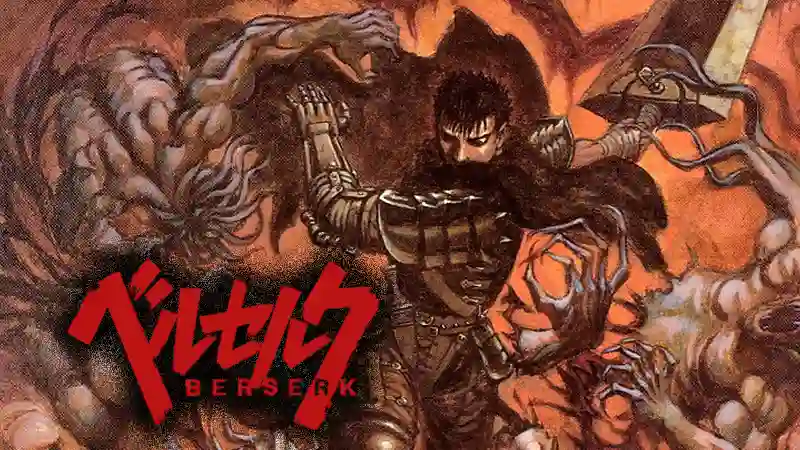
Berserk: From Manga to Anime – A Journey Through Adaptations
- Entertainment
- December 22, 2023
- No Comment
- 1524
Berserk, the dark fantasy epic crafted by Kentaro Miura, has captured the imaginations of readers since its inception in the world of manga. The series, known for its visceral storytelling and intricate characters, has not only found success on the manga pages but has also ventured into the realm of anime adaptations. In this article, we embark on a journey through the adaptations of Berserk, exploring the evolution of the series from manga to anime and examining the unique challenges and triumphs that come with bringing such a complex narrative to the screen.
The Manga’s Pinnacle:
Berserk’s journey begins on the pages of the manga, where Kentaro Miura weaves a tapestry of darkness, tragedy, and supernatural horror. The manga’s success lies in its ability to delve into the nuanced psyche of characters, explore profound themes, and create an immersive world that defies conventional fantasy tropes. Miura’s artistry, attention to detail, and commitment to storytelling excellence establish Berserk as a masterpiece within the manga medium.
The manga’s publication began in 1989, and over the years, it garnered a dedicated and global fanbase. Its serialization allowed Miura to craft a sprawling narrative with intricate character arcs and world-building, creating a foundation that would serve as the source material for future adaptations.
The Golden Age Arc Movies:
In 2012, Berserk took its first step into the realm of anime adaptations with the release of a film trilogy covering the Golden Age Arc. The trilogy, consisting of “Berserk: The Golden Age Arc I – The Egg of the King” (2012), “Berserk: The Golden Age Arc II – The Battle for Doldrey” (2012), and “Berserk: The Golden Age Arc III – The Advent” (2013), aimed to condense the expansive narrative of the manga into a cinematic experience.
While the movies received praise for their faithful adaptation of key events from the Golden Age Arc, some criticisms arose regarding the use of 3D animation and the compression of the intricate narrative. The shift from Miura’s detailed hand-drawn art in the manga to the 3D animation format sparked debates among fans about the visual fidelity of the adaptations.
Despite these concerns, the Golden Age Arc movies successfully introduced Berserk to a new generation of viewers and served as a gateway for those who were yet to experience the depth of the manga.
Berserk (2016) and (2017) Anime Series:
In 2016, Berserk returned to the small screen with a new anime adaptation, picking up the narrative from where the Golden Age Arc left off. The series, simply titled “Berserk,” faced a mixture of anticipation and skepticism from fans who hoped for a faithful representation of the source material.
The 2016 and 2017 anime series continued the trend of using 3D animation, which became a divisive aspect among viewers. While the series maintained the dark and intense atmosphere of the manga, the animation quality faced criticism for its inconsistent visuals and character designs. Some viewers found the 3D animation jarring and believed it did not do justice to Miura’s detailed and intricate illustrations.
Despite the criticisms, the anime adaptations introduced Berserk to a wider audience and ignited discussions about the challenges of adapting such a complex and mature narrative for television. The portrayal of key events, including the infamous Eclipse, stirred emotional reactions from both long-time fans and newcomers to the series.
Legacy and Ongoing Influence:
Berserk’s journey through adaptations has left an enduring impact on the anime industry and the perception of manga-to-anime transitions. The challenges of capturing the essence of Miura’s detailed art and mature storytelling have fueled discussions about the limitations and possibilities of bringing complex narratives to the screen.
The 2016 and 2017 anime series, despite their criticisms, contributed to the continued popularity of Berserk. The adaptations sparked renewed interest in the manga, leading to an influx of new readers who sought to experience the source material in its original form.
The Legacy of Kentaro Miura:
Tragically, the journey of Berserk through adaptations faced a profound setback with the untimely passing of Kentaro Miura in May 2021. Miura’s death marked the end of an era for Berserk, leaving the series unfinished and fans mourning the loss of a visionary creator.
The impact of Berserk, however, lives on through its profound storytelling, complex characters, and the adaptations that introduced the series to wider audiences. Miura’s influence on the dark fantasy genre, his dedication to pushing the boundaries of storytelling, and his ability to create a world both haunting and beautiful ensure that Berserk’s legacy endures.
Conclusion:
The journey of Berserk from manga to anime has been a complex and sometimes controversial one. The adaptations faced the challenging task of capturing the essence of Kentaro Miura’s intricate narrative and detailed artwork. While criticisms emerged, the adaptations succeeded in bringing Berserk to a broader audience, sparking discussions about the challenges of translating mature and complex narratives to the screen.
As the series navigates its legacy in the wake of Miura’s passing, Berserk remains a testament to the power of storytelling and the enduring impact of a visionary creator. Whether experienced through the pages of the manga or the adaptations on screen, Berserk invites audiences to explore a dark and immersive world that transcends the boundaries of traditional fantasy.
